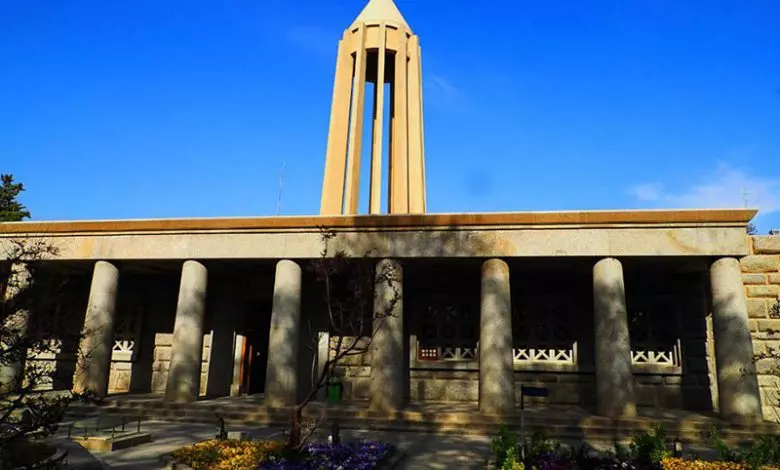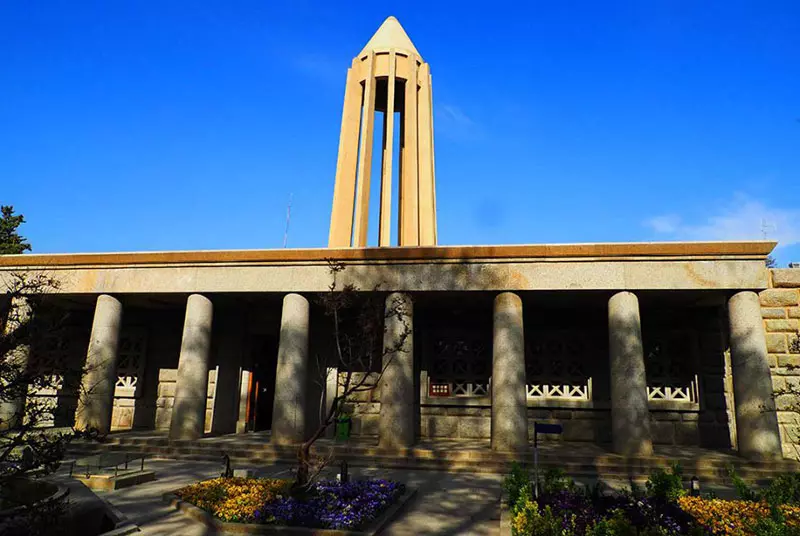Where is Hamadan?
Hamedan is one of the historical and beautiful cities in the west of Iran. This city is located on the slopes of Alvand mountain at an altitude of 1900 meters above sea level. Hamedan's neighbors include Lorestan in the south, Zanjan in the north, Central Province in the east, and Kermanshah and Kurdistan provinces in the west. Among the most important and famous cities of Hamadan, we can mention the cities of Malair, Tuiserkan, Bahar, Nahavand, Kabudar Ange, Asadabad, Bahar, Saman, Sarkan, Qorve in Jezin, Laljin and Merianj.
Hamedan has been the capital of many dynasties in different historical eras, and this has caused numerous works to be seen in Hamedan from the Achaemenid, Sasanian, Al-Buyeh and Seljuk eras. Currently, Hamedan city is known as the fifth cultural and tourism city of the country due to its historical and scenic centers.

History of Hamadan
Hamadan is one of the historical and old cities of Iran. Numerous historical hills have been found around Hamedan, where artifacts from different eras of history have been discovered. Godin and Segavi hills near Kangavar, Nushijan Melair hill, Hegmatane hill are among the most important ancient hills around Hamadan.
According to the writings of the Greek historian Herodotus, after migrating to Iran, the Medes chose the city of Diako as their capital. Diako is the old name of Hamadan and there are some fortifications left from this era. After the extinction of the Medes, Hamadan was chosen as one of the three Achaemenid capitals. At the end of the Seleucid era, Hamedan was the place where they encountered the Parthians, and finally Mehrdad Parthian captured this city. There are traces of the Seleucid and Parthian periods in this city. Hamedan was one of the important cities during the Arab invasion of Iran, and when Hamedan was conquered, they declared their greatest victory over the Sasanians. This conquest is known as "Conquest of Nahavand". Hamadan maintained its importance during the Islamic era and became the capital of Iran once again during the reign of Al-Buyeh. During the Safavid era, prosperity returned to Hamadan.
Hamadan weather
The climate of Hamedan is mountainous due to its proximity to the Zagros mountains. Hamedan has a cool and pleasant spring. In the early months of spring, the heat and cold of winter still persists, but; As summer approaches, the weather gets warmer. The hottest months of the year in Hamedan are the summer season. With the beginning of autumn, the rains begin and the air temperature gradually decreases. Winter begins very cold and snowy in Hamedan. Most winter days in Hamedan are cloudy, rainy or snowy.
The best season to travel to Hamadan
To travel to Hamadan, it is not possible to determine the best travel season. You can choose the right travel season based on your taste and travel style. If you run away from the cold and can't stand the snowy and rainy weather, choose spring and summer for your trip. If you enjoy the rain, autumn is the best choice for you. But if you are happy with snowfall and winter sports, then winter is suitable for your trip
Sights of Hamedan
As mentioned, Hamedan has been the capital of Iran in different eras. This has caused many historical and ancient monuments to remain in Hamadan. In addition to historical monuments, the beauty of Hamadan's natural attractions is not hidden from anyone. Many natural attractions of Hamedan are hidden among the Zagros mountains.
Ali Sadr Cave
Ali Sadr Cave is one of the few water caves in the world. In this cave, tourists can experience the longest canoe route inside the cave. Ali Sadr Cave is located in the heights of Sari Qiya and near Ali Sadr village. The cave has unique corridors, corridors and halls and its length is 11 kilometers. Due to the difficult nature of the route, only 3 km of it has been discovered.
Ganjnameh tourist village
One of the most famous sights in Hamadan is Turisi Ganjnameh village. They started building a tourist village next to the Ganjnameh waterfall and Achaemenian inscriptions from 1378, and it took 16 years to build the village. In this amusement park village, there is a cable car, a rail sled and an aquarium cave that can provide you with happy hours.
Ganjnameh inscriptions
Ganjnameh inscriptions are one of the most important inscriptions left from the Achaemenid period in Iran. These inscriptions are written in three columns of 20 lines and in ancient Persian, Babylonian and Elamite languages. According to experts, Ganjnameh inscriptions remain from the time of Darius and Xerxes of the Achaemenid kings and provide good information about the culture and the way cities were run during the Achaemenid period.
Ganjnameh waterfall
Ganjnameh waterfall with a height of 12 meters flows in the middle of Ganjnameh tourist village. The best season to visit Ganjnameh waterfall is spring and summer. Few people are interested in visiting Ganjnameh waterfall in winter. But in the cold winters of Hamadan, this waterfall turns into a tableau of big and small white lanterns and creates a unique view. Ganjnameh waterfall is located on the way to Alvand peak and Ganjnameh inscriptions are located near the waterfall.
Hagmatane Hill
One of the oldest sightseeing places in Hamedan is Hegmataneh. According to many experts and archaeologists, the ancient hill of Hegmetane first became the capital of the Medes and later the summer capital of the Achaemenids. For this reason, Hegmataneh should be considered the oldest and the first capital of Iran. The discoveries in this ancient hill continue and all the works and objects obtained from the excavations are displayed in the Hegmatane Museum.
Abu Ali Sina Tomb
Many tourists consider the symbol of Hamedan to be the tomb of Abu Ali Sina. The original building of the tomb was built during the Qajar era. The tomb building was rebuilt during the Pahlavi era on the pretext of the 1000th anniversary of Abu Ali Sina's birth. The architect of the building was Hoshang Sihon, who was inspired by Qaboos Tower and Iranian gardens.
Tomb of Baba Tahir
The tomb of Baba Taher, a great Iranian poet and mystic, is also located in Hamadan. The tomb is built on a hill in the northwest of Hamadan. Long columns and turquoise dome are the main elements of the tomb. The interior of the dome has beautiful tiles that many tourists enjoy seeing.
Gregory Stephen Church
A simple and old church can be seen in the eastern part of Hegmetane and in the old Armenian neighborhood. Gregory Stephen Church belongs to the Orthodox religion and was built by Isfahan Armenians, Russian immigrants and merchants living in Hamadan. The church does not have many decorations, but; Beautiful arches, columns and vaults are used in the architecture of the building. The bell tower of the church is built in a circular shape inspired by the domes.
Alavian dome
Alaviyan Dome is considered one of the architectural masterpieces of the Seljuk era. This building belongs to Alevi family and was built as a mosque at first. Later, the cellar part was turned into the family tomb of this family. According to experts, the stucco of this building is made at the peak of perfection and beauty.
Stone lion statue
In Hamadan, a stone statue can be seen, which is known as the stone lion statue among tourists and local people. According to experts, this stone lion probably had a similarity and was destroyed later due to various reasons. There is a difference of opinion about the age of the stone lion statue. However, experts attribute its date to the Parthian era based on carvings and the discovery of a Parthian sarcophagus near the statue.
Alvand or Tarikdare ski resort
As mentioned, Hamadan is one of the mountain cities of Iran. Winter days in Hamedan are often snowy, and this has led to the creation of a ski resort for winter sports lovers around Hamedan. Ten kilometers southwest of Ganjnameh road on the slopes of Elvand mountains, there is a track called Elvand track or Dark valley. The name of the track is taken from the peak of Tarik Dara with a height of 3413 meters which is located near this post. This ski resort has many facilities and the height of the ski resort starts from 2450 meters and continues up to 3000 meters. Alvand ski resort also has a grass ski rink for the summer season.
Hamadan souvenirs and handicrafts
Hamadan handicrafts are very famous among tourists. Some handicrafts of Hamadan are considered as symbols of this city. The most famous handicrafts of Hamedan include carpet weaving, leather embroidery, rugs, pearl weaving, and silk weaving. Among these industries, the pottery industry of Hamedan has an international reputation. Few people in Iran have not heard the name of Laljin pottery. The art of pottery in Hamedan dates back to about 700 years ago and this art is still common in Hamedan and tourists are also very interested in this art.
Delicious Hamedan souvenirs
In addition to handicrafts, Hamedan also has delicious souvenirs. Tourists can go for these foods as a treat. Among the most important souvenirs of Hamadan, we can mention Basluq sweets, grape juice, and Angu Pich.
Hamedan shopping centers
To buy souvenirs and handicrafts of Hamedan, the local markets and the historical market of Hamedan are the best choices. But if you love shopping, you can visit Hamadan shopping centers. Hamedan was popular for tourism, it has many shopping centers and some of them have made shopping very convenient for buyers by providing modern facilities and equipment. Among the most important shopping centers in Hamedan, we can mention Shahrara Passage, Mehstan Passage, Vahdat Shopping Center, Capital Passage, Almas Passage and Chehelston Passage.
Introduction of Hamadan local dishes
Due to the cold and mountainous weather in Hamedan, people cook various soups in the short and cold days of autumn and winter. For this reason, the most famous local dishes of Hamadan are all kinds of ash. Among the most famous local soups of the city are Hamedan Rice Soup, Eggplant Soup, Amaj Soup, Carrot and Barley Soup, Hamadani Pepper Soup, Dried Fruit Soup, Sumak Soup, Shelle Soup, Qaysi Soup, Pickled Soup, Petle Shell Soup, and Cucumber Soup. Cited.
Access ways to Hamedan
You don't have much difficulty to go to Hamadan. If you are into road trips, Saveh to Hamedan highway can be a good choice for you. If you enter Hamedan from the west, you must use the route from Malair to Hamedan. But some people hate long drives. Do not worry. There are buses to Hamedan from most cities in Iran, and the easiest and cheapest way to reach Hamedan is by rail.
But the easiest, fastest and of course the most expensive way to reach Hamedan is by air. There are flights from many Iranian airports to Hamedan International Airport. Of course, weekend and holiday flights are very expensive and may not be a good choice for traveling to Hamedan.
Stay in Hamadan city
There are many options for staying in Hamedan, from luxury hotels to affordable apartment hotels. But if you need an independent residence with suitable facilities, we recommend booking and renting a furnished apartment in Hamedan. Furnished apartments and suites are located in different parts of Hamadan, and to reserve them, you only need to search on accommodation booking and rental sites.
